
Here we are on the brink of another busy spring-season – full of hope that we’ll be able to make our gardens even more fabulous than they were last year! We know that by the end of February, we’ll be madly trying to keep up with our horticultural to-do lists, but for now, there are some quieter jobs to be getting on with, like sorting out algae-covered paving, feeding (and watching!) the birds, and sowing some broad beans………
You’ll find a link to a podcast of this post at the end, by the way.
Fleecing the fleabane
I love a good fleabane, and the Mexican variety (Erigeron karvinskianus) is one of the best. Being a soppy old romantic at heart, I love the way this pretty little spreader softens all the edges of a harsh run of paving or insinuates itself in the corners of stone steps and walls. Its bright little daisies look very much like the daisies you find in a lawn and I do like the way they open white and then turn pink – a pretty two-toned effect that looks just right in a cottage-y garden amongst the roses.
These plants are said to like ground that doesn’t dry out, but they seem super-happy along my very sunny south-facing path, thriving in the same conditions as the Californian poppies – in other words, no ‘artificial’ watering at all, ever!
They flower for weeks and weeks at about 1? (30 cm) high from early May onwards, and the bees and insects love them. I like to give them a fairly hearty snip-over at the end of June – they will then keep flowering and flowering right through till November.
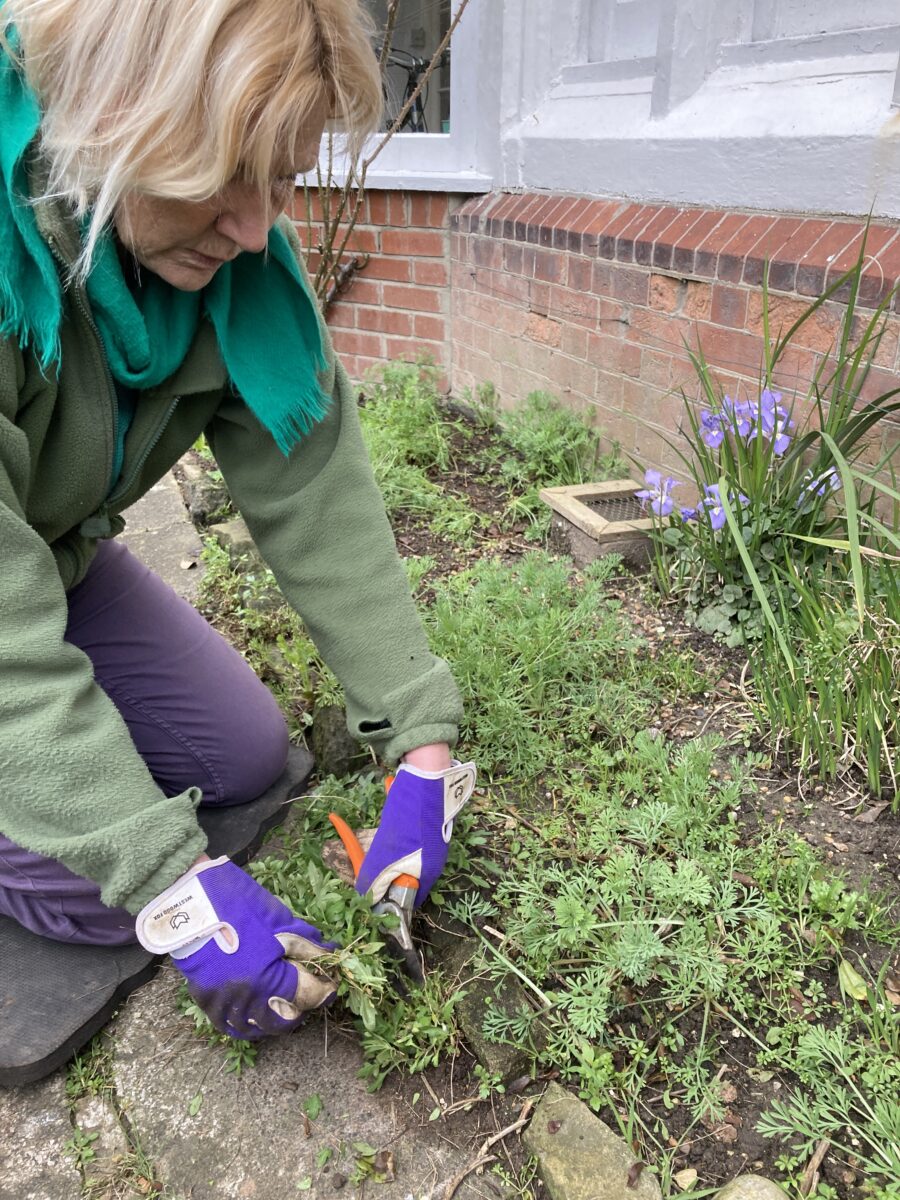
I sometimes cut these back in November actually, because the matted wiry brown stems often become a haven for the hundreds of overwintering snails that lurk in this garden. Just didn’t get around to it then, so I daresay I’ll surprise a few of the little blighters now!
For the etymologists among you, it has the folk-name of fleabane because people thought that fleas were repelled or poisoned by it. And even better, the name Erigeron comes from the Ancient Greek for ‘old man early in the day’ – possibly because of its white-haired early-appearing seed-cases or the downy leaves of some species. Don’t know about you, but early in the day, my old man is not ALWAYS a thing of beauty, but there you are……..
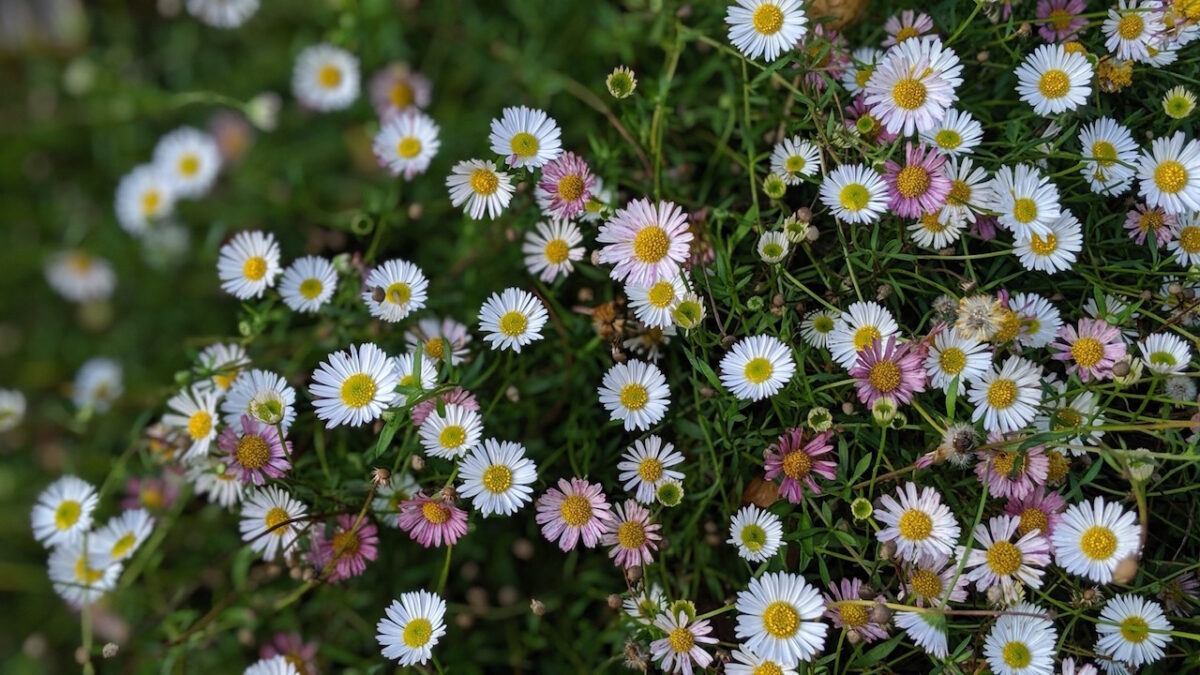
Scrubbing Up
In the murky midwinter weather, moss and algae can creep across paving, decking and steps more readily, especially in shady areas. It usually looks messy and fairly horrible and even worse, it can be dangerously slippy – especially for older lady gardeners who sometimes scurry round the garden getting things done, but not always looking properly at what’s underfoot…………………..
So tackle these green patches now, using a sharp old kitchen knife or weeding tool along the paving cracks, and a wire brush or stiff broom on the surface. A power-washer is handy for washing away the debris, if you have such a thing. If you want to go down the chemical route, proprietary patio-cleaners are available, but do check that they won’t damage plants growing nearby or discolour the stone.
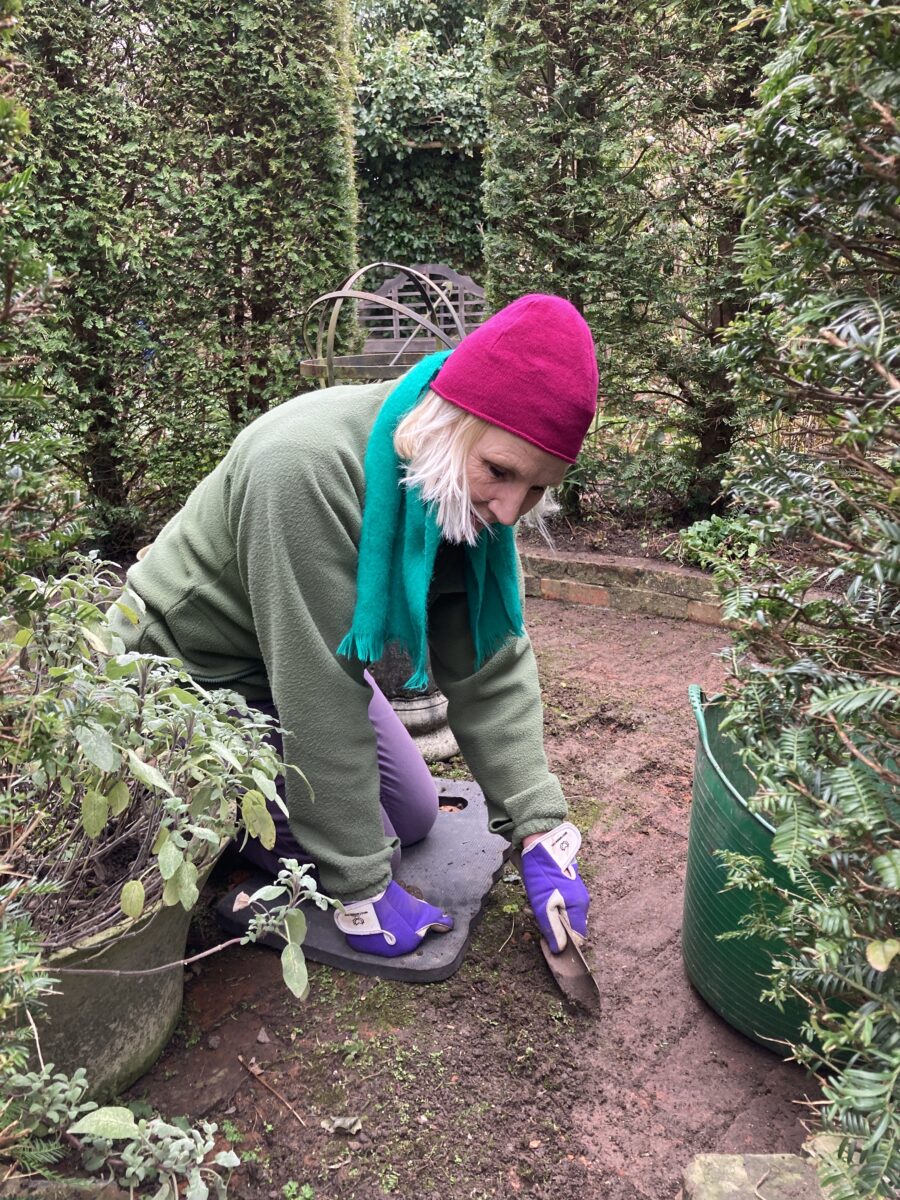
If there are areas that are persistently prone to this algal problem, can you prevent or at least slow up the re-growth? Maybe you could dig shallow channels alongside the paths, drives etc. and fill them with coarse gravel? This would usefully absorb the run-off. Chopping back overhanging branches would let more light and air dry up standing moisture. Think also about sprinkling coarse sand in steps or attaching chicken wire over decking which hugely improves grip.
Let’s keep safely on our feet as we go about our gardening business……..
Birdbrains
It’s the RSPB Big Garden Birdwatch 2022 this weekend! – I hope you’re going to take part in this nationwide annual survey of how our birdlife is faring. Do get the children and grandchildren involved too. There’s a link at the bottom to find out how to do it.
Having a range of different feeders is a good way of attracting lots of songbirds with their favourite snacks. All sorts of tits and finches like high-energy foods like seeds, peanuts and fat-balls. Leave fruit pieces on the patio or lawn for the birds that prefer to feed on the ground like blackbirds and robins. Bluetits and robins also like mealworms, and goldfinches and greenfinches like niger/nyjer seeds, though I have to say that when I put out some of these little black seeds, they were much less popular than everything else. I read somewhere that soaking them can make them more attractive as a food-source, so maybe I’ll try that next time.
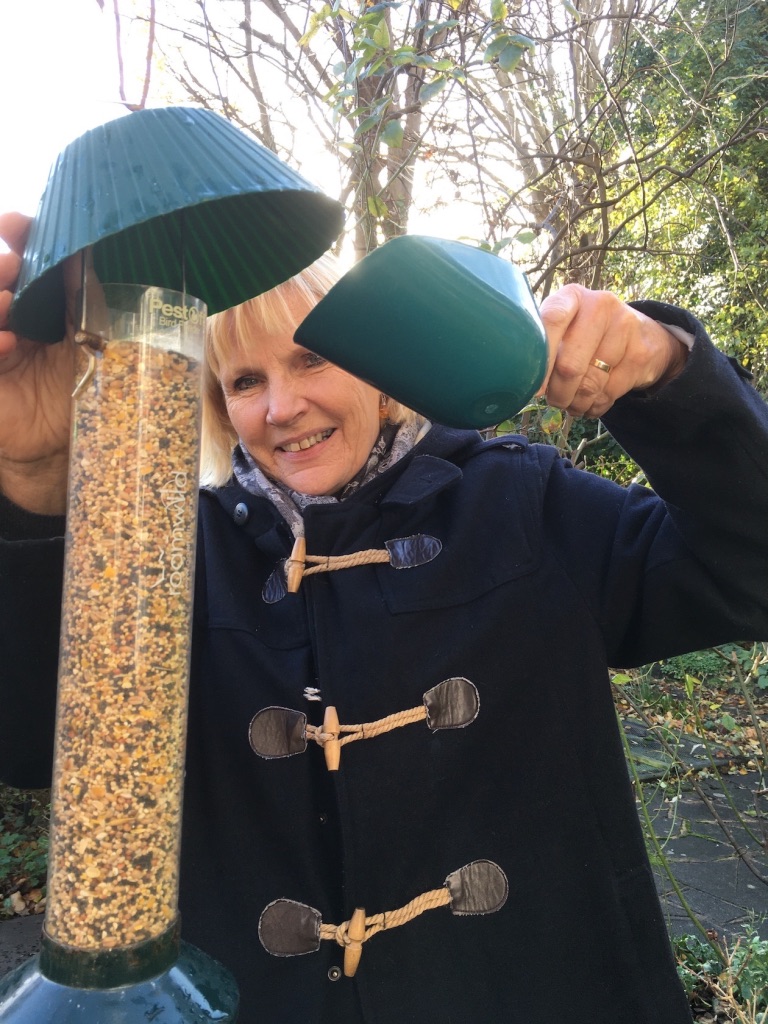
I hope you’ve kept some seedheads on your garden plants as well as berries on holly, ivy, honeysuckle, Pyracantha, etc. and left all sorts of rosehips out there. It’s so wonderful to watch the birds feasting on them.
One last thing, do keep the birdbath clean and topped up, and melt it if it turns to ice! We actually use a china pet food bowl on our birdtable, which seems to work well.
Gardening shorts
- If you didn’t sow some broad beans back in the autumn, get some going now – I show you how in a short video on our YouTube channel
- Prune hardy evergreen hedges like privet, yew or cherry laurel, before spring growth starts and the birds start nesting in earnest. Give them a good mulch of rotted manure or compost while you’re about it
- We have some super little garden notebooks just arrived in our online shop! I think EVERY gardener should keep a notebook at all times and these would fit the bill perfectly – make sure you have a look at them
- Start sowing some Hardy Annuals like marigolds and annual poppies for early flowers this summer
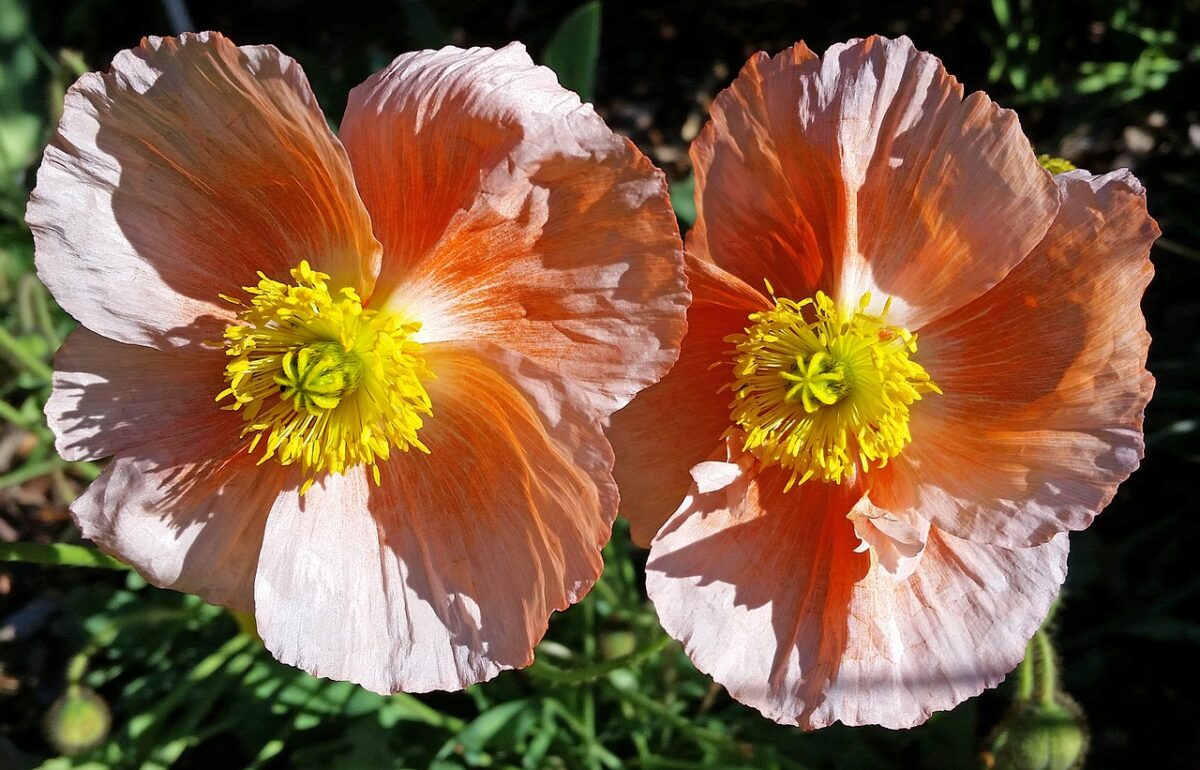
Here is the link to the Great Garden Birdwatch 2022. This is the link to a short podcast of this post – do check it out.
Are you excited by all the seed and plant catalogues thumping through your letterboxes at the moment? We’ve previously offered advice on how to approach these!
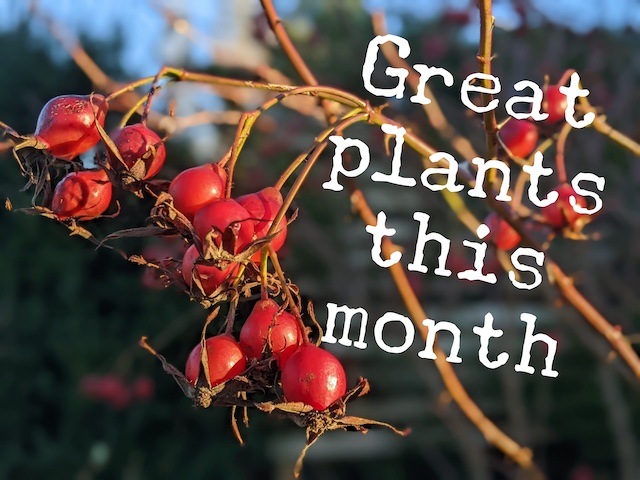
More NB If you’re not already a subscriber and you’d like a bit more gardening chitchat from the3growbags, please type your email address here and we’ll send you a new post every Saturday morning, or share this link with your friends bit.ly/growbagblog
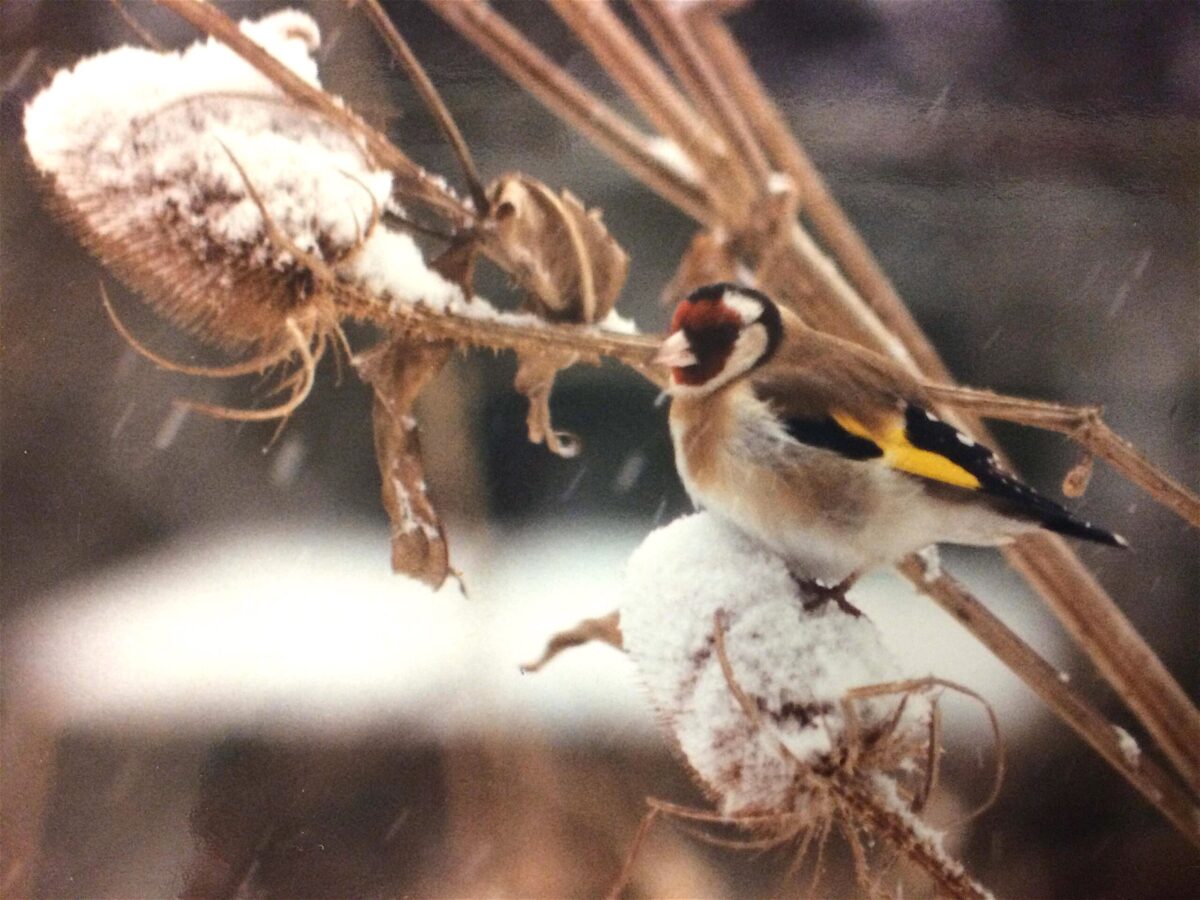
2 replies on “Itching to get going? Gardening tips for February”
Blowing a gale here so hope those birds who we feed regularly show up. They usually disappoint us in our chosen hour for the birdwatch. Mexican Daisies are on my to buy list.
Yes, I hear that bits of the UK are getting quite a battering today, Linda – might tomorrow be a better day to do your birdwatching? You are echoing exactly the sort of conversation that happens in our house on Birdwatch Weekend….”But we ALWAYS have at least four blue tits on that feeder – where have they GONE?!” Then the blighters turn up 10 minutes after the hour is over…. Never mind, we love doing it, and contributing to the bank of knowledge that the RSPB amasses through this survey. All the best, Elaine.